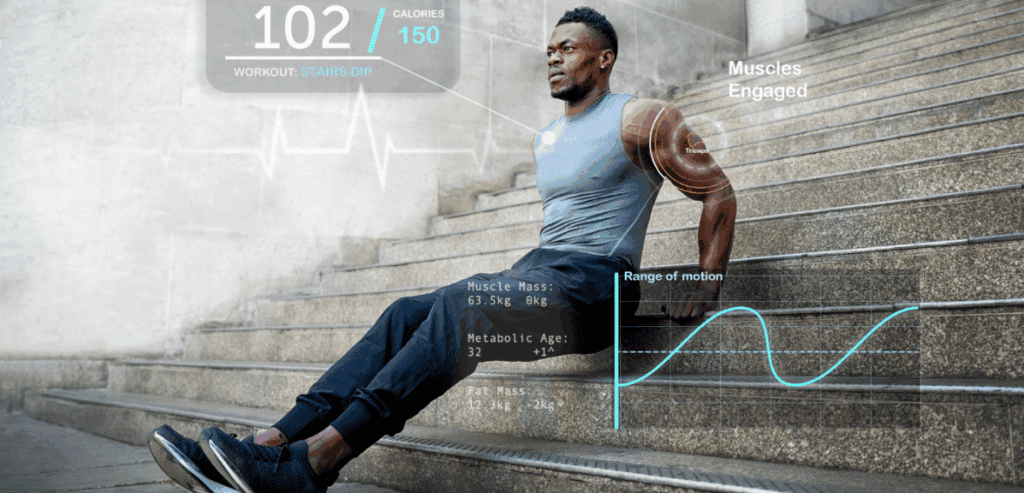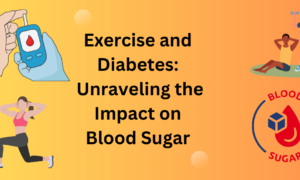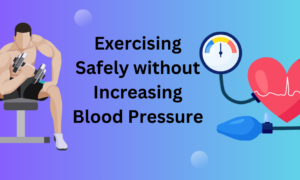In any fitness journey, progress is not always obvious from day to day. Some changes take weeks to appear, while others happen behind the scenes long before you can see or feel them. This is why measuring your development matters just as much as training itself. Without a clear system for fitness progress tracking, it becomes difficult to understand what is working, what needs adjustment, and how your body is responding to different forms of training. Whether your goal is to run longer distances, lift heavier weights, or improve your appearance, consistent tracking helps you connect effort with results. It also prevents discouragement by showing improvements that may not be immediately visible.
Different goals require different methods. Someone focused on endurance should not track progress the same way as someone aiming for strength or physique enhancement. Each goal group has unique indicators that determine success. Learning how to understand and apply these workout metrics is essential for staying motivated and making informed decisions. With clear strategies for strength endurance aesthetics tracking, your fitness routine becomes less about guessing and more about structured results. When progress is measurable and meaningful, training becomes more enjoyable and rewarding, and every milestone feels earned.
Why Tracking Matters for Every Fitness Goal
Tracking keeps you accountable, organized, and aware. When people begin a fitness routine without tracking anything, they often rely on memory, feelings, or guesswork to judge their improvement. This can be misleading, especially because the body adapts gradually. By committing to consistent fitness progress tracking, you collect real evidence of how far you have come. Over time, these numbers highlight patterns that help you maximize your effort. For example, if you notice slower improvement in one area, it may indicate that you need more recovery, different exercises, or increased intensity.
Additionally, progress logs turn training into a long-term journey instead of a series of random workouts. They motivate you when progress feels slow. Clear workout metrics show you whether your endurance, strength, or aesthetics are improving at the expected pace. In strength endurance aesthetics tracking, even small changes such as better form, improved breathing, or visual muscle definition are worth documenting. The more you track, the easier it becomes to build a balanced plan that grows with you. Tracking helps prevent plateaus, reduces injury risk, and makes you more intentional with every workout.
Endurance Training Metrics That Truly Matter
Endurance training focuses on improving stamina, heart health, and long-duration performance. Many people think time and distance are the only things worth tracking, but endurance progress is more nuanced. Effective fitness progress tracking includes pace, heart rate, recovery speed, perceived exertion, and consistency over time. Pace helps you see how efficiently you move through each session, while heart rate indicates how hard your body is working. When monitored correctly, these details help identify improvements long before you increase your mileage.
With workout metrics like VO2 max, cadence, and elevation gain, runners and cyclists get a deeper understanding of their aerobic capacity. In strength endurance aesthetics tracking, endurance metrics show how well the body withstands prolonged activity. They reveal whether your conditioning is improving or if you need to adjust intensity. The key is to measure changes under similar conditions. For example, completing the same run route in less time with lower exertion signals strong progress. Over weeks, these small improvements accumulate, helping you reach new milestones without overtraining or burnout.
Strength Training Metrics for Measurable Gains
Strength progress is not just about lifting heavier weights. It involves improvements in form, stability, rep quality, power output, and muscular control. Tracking these details helps create a clear picture of how your body is changing. In fitness progress tracking, metrics such as one rep max, training volume, rep tempo, and range of motion hold significant value. They show whether your strength foundation is increasing steadily. In many cases, lifters experience neuromuscular improvements before actual weight increases, which is why consistent documentation is essential.
When you analyze workout metrics for strength, you begin to see patterns in performance. For example, if you lift the same weight for more repetitions with better control, that is meaningful growth. In strength endurance aesthetics tracking, strength metrics also influence body composition. Stronger muscles contribute to better posture, improved metabolism, and long-term durability. Tracking also prevents overtraining by helping you recognize when progress slows due to fatigue or inadequate recovery. The more detailed your logs, the easier it becomes to adjust programming and keep your strength journey sustainable.
Aesthetic Progress Beyond the Mirror
Many people rely solely on the mirror for aesthetic progress, but visual changes often take longer to appear. The mirror can also be subjective based on lighting, angles, or mood. That is why effective fitness progress tracking requires objective measurements such as circumference changes, body fat percentage, progress photos, clothing fit, and muscle symmetry indicators. These measurements give a clearer sense of how your body composition is improving.
Using workout metrics related to aesthetics helps reveal subtle changes, such as a tighter waistline or improved muscle balance. These details are meaningful in strength endurance aesthetics tracking, because aesthetic progress is deeply connected to performance improvements. Better endurance often reduces body fat, while strength gains contribute to definition and shape. Tracking these metrics prevents discouragement by revealing growth even during times when the mirror shows little change. Over months of consistent documentation, aesthetic progress becomes easier to understand and celebrate.
How to Stay Motivated Through Data-Driven Progress
Tracking numbers is helpful, but maintaining motivation requires context. Without meaning behind the metrics, progress can feel mechanical. When you understand the purpose of each number and how it aligns with your goals, fitness progress tracking becomes more encouraging. If your endurance pace improves slightly each week, even by a few seconds, that is a win worth acknowledging. Small increments eventually lead to major breakthroughs.
Meaningful workout metrics help reinforce discipline, reminding you why you started. In strength endurance aesthetics tracking, even days of slower progress become valuable because you learn how to adjust. You may discover that better sleep, hydration, or nutrition impacts your performance. Data reveals connections between lifestyle and fitness, helping you grow in a holistic way. When your journey becomes guided by numbers you understand, motivation remains strong and grounded.
How Recovery Influences Progress in All Training Types
Progress depends heavily on recovery, yet many people track only their workouts. In reality, recovery measurements are just as valuable as physical performance metrics. Consistent fitness progress tracking includes sleep duration, sleep quality, muscle soreness, resting heart rate, and recovery time between sessions. These indicators show whether your body is ready for the next challenge or needs more rest.
In analyzing workout metrics, poor recovery often reveals itself through stalled improvements, reduced endurance, and weaker strength output. This is crucial in strength endurance aesthetics tracking, because gains disappear without adequate recovery. Monitoring how your body responds to training allows you to adjust volume, intensity, and frequency. Good recovery habits make every form of training more effective, ensuring long-term progression without burnout or injury.
The Role of Consistency in Long-Term Measurement
One of the most powerful yet underrated factors in tracking progress is consistency. Sporadic tracking makes data unreliable and difficult to interpret. With steady fitness progress tracking, patterns become clear. You can compare sessions accurately, identify trends, and adjust your approach with confidence. Consistency does not mean tracking every tiny detail daily, but rather choosing the right metrics and repeating them regularly.
Clear workout metrics help prevent guesswork. For example, tracking weekly endurance time, biweekly strength numbers, or monthly body measurements creates a smooth timeline of growth. In strength endurance aesthetics tracking, consistency helps you recognize plateaus before they become long-term setbacks. When your data is organized and predictable, your progress becomes easier to measure and more motivating.

Avoiding Common Tracking Mistakes
Mistakes often arise when people obsess over numbers or measure too inconsistently. Overtracking can become overwhelming, while undertracking provides incomplete data. Smart fitness progress tracking means choosing a few meaningful indicators rather than dozens of unnecessary ones. Another common mistake is comparing your metrics with someone else’s journey. Personal progress should always be measured against your own baseline.
Misinterpreting workout metrics can also be misleading. A slower run might not be a setback if you trained under hotter conditions or slept poorly the night before. In strength endurance aesthetics tracking, context matters. Progress rarely moves in a perfectly straight line. Understanding fluctuations prevents unnecessary disappointment and helps you refine your strategy. The goal is not perfection but awareness.
Using Technology and Apps to Streamline Fitness Tracking
Modern tools make fitness progress tracking easier and more accurate than ever. Mobile apps, wearable devices, and smart gym equipment provide real-time data that once required specialized testing. These tools simplify the collection of workout metrics such as heart rate, pace, power output, sleep cycles, and even recovery readiness. Technology removes guesswork by offering clear trends over time, helping users understand how training, rest, and lifestyle choices influence performance. In strength endurance aesthetics tracking, apps allow users to log weights, reps, measurements, and progress photos in an organized timeline. Many platforms also offer visual graphs and comparisons that reveal long-term improvements that may otherwise go unnoticed.
Wearables detect subtle changes in fatigue levels, enabling smarter planning and reducing the risk of overtraining. With automated reminders, customized dashboards, and accessible records, technology ensures tracking becomes a natural part of your fitness routine rather than a chore. The easier tracking becomes, the more consistent it becomes, and consistent tracking is the foundation of meaningful progress. Over time, these tools transform raw data into actionable insights, empowering people to make adjustments that enhance performance and physical results without losing motivation or direction.
Balancing Quantitative Data with Qualitative Observations
Numbers offer clarity, but feelings and personal observations play an equally important role in fitness progress tracking. Many improvements cannot be measured numerically but still hold tremendous value, such as improved confidence, better breathing, reduced joint pain, or increased daily energy. These qualitative signals complement workout metrics and help create a complete picture of progress. For example, you may not see an immediate increase in weight lifted, but you may notice smoother form, better stability, or less hesitation during exercises. These changes matter deeply in strength endurance aesthetics tracking, because they often indicate stronger neuromuscular connections and improved efficiency. Likewise, endurance athletes may observe increased comfort during long sessions even before their recorded times improve.
Paying attention to sleep quality, appetite, mental clarity, and mood also reveals how well your training plan supports your overall well-being. Emotional consistency is often a sign of balanced training, while irritability or persistent fatigue may indicate overreaching. Blending numbers with personal experiences helps create a holistic understanding of your journey. This balanced approach prevents frustration, strengthens self-awareness, and ensures you remain connected to your long-term goals rather than becoming fixated on isolated data points.
Adjusting Training Plans Based on Tracking Data
Tracking is only useful when you actually apply what the data reveals. The true power of fitness progress tracking lies in its ability to guide future decisions. When you see consistent patterns in your performance, recovery, or energy levels, your training plan should evolve accordingly. If workout metrics show stagnation, it may indicate the need for new exercises, different rep ranges, altered tempo, or increased variation. For endurance athletes, slow improvement in pace or heart rate may suggest the need for a better balance between high-intensity and low-intensity sessions. In strength endurance aesthetics tracking, plateaus often occur when volume remains unchanged for too long or when recovery habits fall behind training intensity.
Adjusting your program based on the data ensures continued growth. These changes do not have to be drastic; sometimes small shifts in rest periods, weekly frequency, or exercise selection create significant progress. Tracking gives you permission to customize your plan rather than blindly following generic routines. By responding to the trends you observe, you turn your training into a dynamic, responsive system that adapts to your body’s needs, prevents stagnation, and keeps you steadily moving toward your goals.
Celebrating Milestones to Sustain Long-Term Motivation
Progress often happens in small steps, and celebrating those steps keeps motivation strong. Many people focus solely on their ultimate goal, which makes them overlook the many achievements along the way. By using fitness progress tracking, you can easily identify these mini-milestones, whether it is a faster time, heavier lift, improved posture, or a slight aesthetic change. Recognizing these wins helps reinforce consistency and creates a positive feedback loop. When reviewing your workout metrics, small improvements become visible markers of effort paying off. This is especially powerful in strength endurance aesthetics tracking, where changes develop slowly but steadily.
Celebrating milestones does not require elaborate rewards; simple acknowledgments such as updating progress photos, journaling breakthroughs, or sharing achievements with friends can significantly boost morale. These celebrations remind you that growth is happening even when the finish line feels far away. Over time, this mindset transforms fitness from a task into a personal journey filled with meaningful accomplishments. Motivation thrives when progress is recognized, and tracking provides the evidence needed to appreciate your hard work and stay committed for the long term.
Conclusion
Tracking progress transforms fitness from a guessing game into a clear, measurable path toward better endurance, stronger muscles, and improved aesthetics. With consistent fitness progress tracking, smart workout metrics, and structured strength endurance aesthetics tracking, you gain deep insights into how your body grows and adapts. These insights encourage smarter decisions, reduce frustration, and create long-term success. Whether you aim to run farther, lift heavier, or sculpt a better physique, your tracking method becomes one of the strongest tools guiding you there.





















